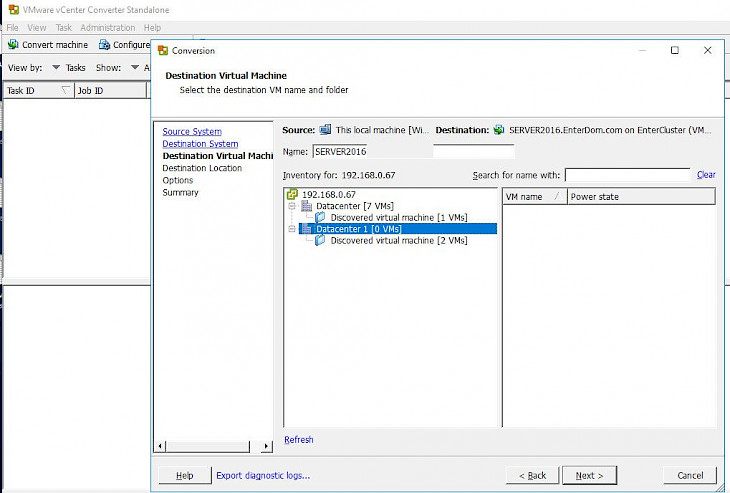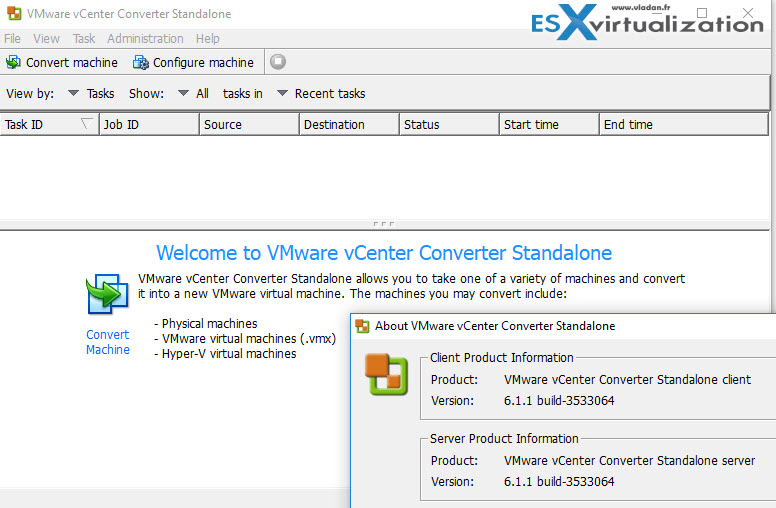

However, sometimes you may need to convert between them. VMware products create virtual disks in VMDK format, and Hyper-V creates virtual disks in VHD or VHDX format. While VMware and Microsoft Hyper-V are the most popular virtual products, they are not compatible with each other.

The cloning process uses the snapshot and the files to assemble a reasonable picture of what the entire disk looked like.Ĭheers.Why convert VM between Hyper-V and VMware The snapshot basically creates a point-in-time reference and tracks any block-level changes to the files in the file system. Any subsequent changes to any files after the snapshot is taken will not be copied as well. Any files that are open at the time of the snapshot may not have their data committed which will result in a crash-consistent state for your destination VM. Hot cloning works by creating a snapshot at the beginning of the cloning process and then copying that snapshot to the newly create VM. Hot cloning works well for less sensitive servers that have more static content like web, print, DNS and application servers. This is the best option for data sensitive servers like database and email servers. Cold cloning offers the best chance of success because the server OS is not running which will ensure that no data is corrupted since there are no open files while the conversion process is running. Which method you choose will depend on the type of server you are converting. There are two methods used to clone a server, hot cloning (while the server OS is running) or cold cloning (from a boot CD (Windows PE) while the server's OS is not running). Only files from the time of snapshot at 8:00 PM. After migration start at 8:00 PM I've created new example.txt file on C partition. I've chacked hot migration on one server. In this case server is not available to users so I can turn it off and make cold migration. For other servers users should be restricted from accessing server during migration. This is maybe true for forms or web servers where users don't change anything on server. I've checked and tested this and looks like VMware is not telling complete truth here about hot migration. RE: How VMware vCenter Converter Standalone actually works? baddos (MIS) 12 Nov 09 11:59 Are all the changes created after snapshot has been created have been applied to cloned machine? So, what is happening with changes that users made from 8:00 PM (when snapshot has been created) till 10:00 PM when new cloned machines start to be functional. We are shuting down old machine (server1) and new cloned machine takes all their functions. Machine cloning has finished at 10:00 PM.

Users are still working on this machine and making some changes. VMware vCenter Converter make a snapshot. We are starting cloning of machine server1 at 8:00 PM. We are cloning machines and after cloning has finished we are shuting down old machines. This way there isn't any downtime of source server. VMware vCenter Converter first takes a snapshot of the source machine before migrating the data. I have found in datasheet that VMware vCenter Converter is using sector-based copying.
#How to put vmware vcenter converter standalone in vm windows
We are migrating some windows and linux machines with VMware vCenter Converter Standalone 4.0.1 build-161434. I need to know how VMware vCenter Converter Standalone actually works.


 0 kommentar(er)
0 kommentar(er)
